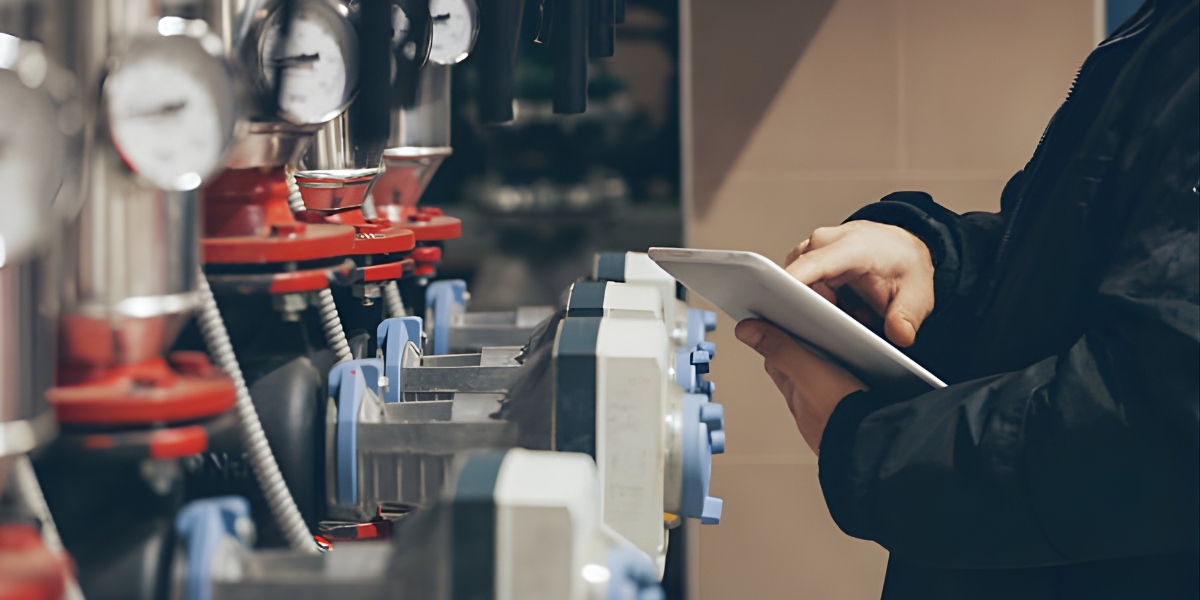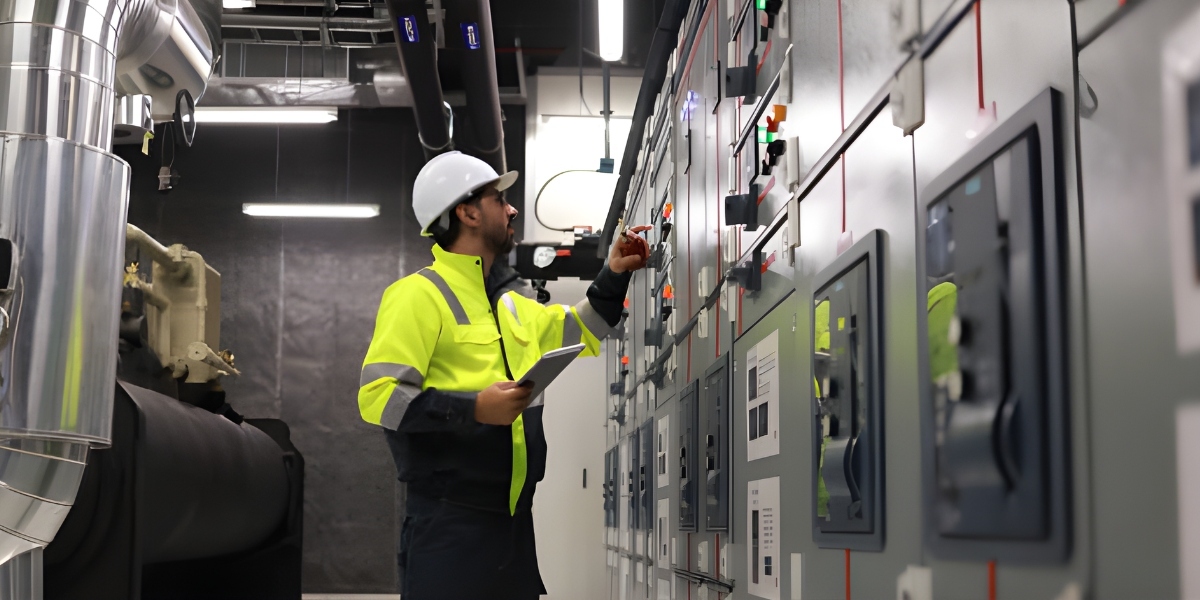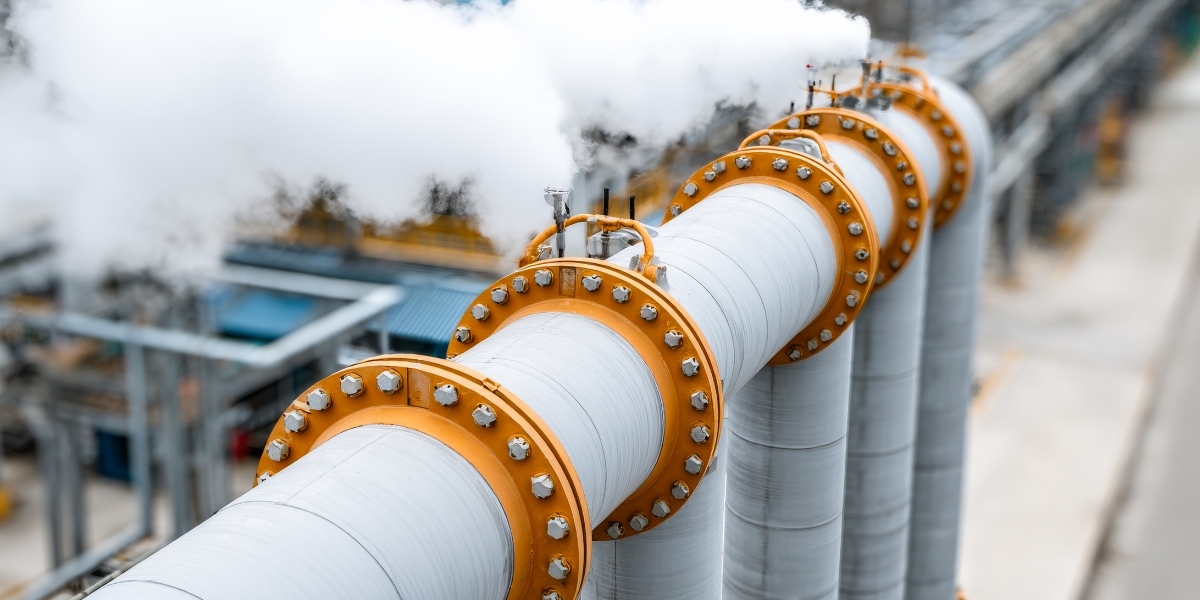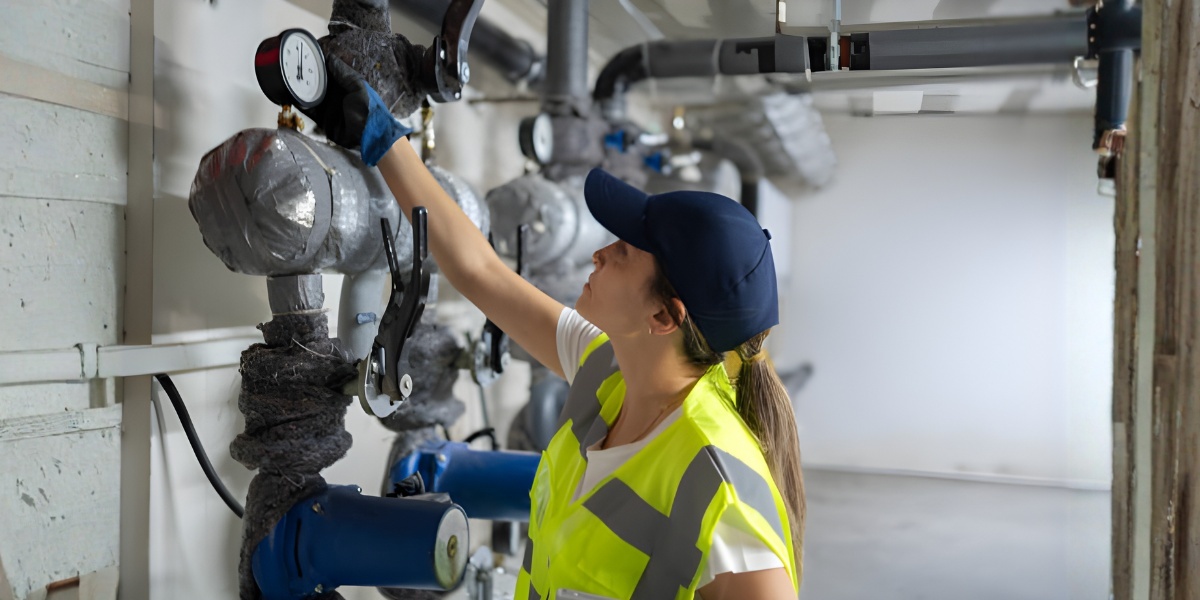Why Fall is the Perfect Time for Valve Maintenance (And What Happens If You Wait)
Posted by Gilbert Welsford, Jr on Nov 17th 2025
We're well into fall now, which means it's time for that conversation nobody wants to have: winter prep. Between production schedules, quarterly budget reviews, and everything else demanding attention, valve maintenance often gets pushed down the priority list. But here's what we've learned after six decades in the valve business: facilities that schedule their valve inspections before winter arrives have a much smoother season than those that wait until something breaks.
CLICK HERE to download the Fall Maintenance Checklist

There's a reason experienced maintenance managers prioritize their valve inspections during fall. Several factors come together during this season that make it the most practical time for thorough valve work.
Why Fall Maintenance Makes Sense
There's a reason experienced maintenance managers start planning their valve inspections in September. Several factors come together during fall that make it the most practical time for thorough valve work.

Working Conditions Matter More Than You'd Think
Temperature affects maintenance work quality in ways that aren't always obvious. When you're working in 50-70°F weather, lubricants flow correctly, sealants cure properly, and your maintenance crew can focus on finding potential problems instead of just trying to stay warm enough to function.
Cold weather maintenance creates a whole set of challenges. Lubricants get thick and difficult to work with. Metal components contract, which affects measurements and tolerances. And let's be honest: when your technicians are freezing, they're focused on finishing the job and getting back inside, not on catching subtle signs of wear or degradation.
We've seen the difference in work quality between fall maintenance and emergency winter repairs. The same technician who'll spend ten minutes examining a valve seat in November will give it a quick glance in January when their hands are numb despite wearing gloves. That's just human nature, and it's why weather conditions matter for quality inspection work.
Production Schedules Have Natural Breathing Room
Most industries follow some kind of seasonal pattern. Fall often sits between the summer push and year-end demands, which creates opportunities for maintenance that won't significantly impact production targets. Coordinating valve work during these quieter periods just makes sense. You're not forcing operations to choose between meeting customer commitments and maintaining critical equipment.
The alternative is emergency maintenance during your busiest season, which is nobody's idea of good planning. When you're running flat-out and a valve fails, you're stuck with whatever downtime the repair requires, whether it's convenient or not.
You Can Actually Test Things Properly

Here's something that doesn't always get enough attention: valve testing needs relatively stable conditions to produce meaningful results. Temperature swings, moisture, and extreme weather all affect how valves perform and how reliable your test data will be.
Fall weather gives you the stable environment you need for accurate diagnostics. And when testing does reveal problems, you've got time to order parts and schedule repairs before winter arrives. Compare that to discovering issues in January, when you're paying expedited shipping costs, hoping the parts are even available, and trying to schedule repairs around both weather and production demands.
Winter Doesn't Forgive Marginal Equipment

This is where fall maintenance really proves its value. Winter takes problems that seem manageable in moderate weather and turns them into failures. Freezing temperatures make water expand, which can crack valve bodies and damage seals. Thermal contraction affects sealing surfaces. Lubricants thicken up and affect how actuators perform.
A valve that's operating at 95% in the fall might fail completely in February. That incremental degradation you could live with during good weather becomes a critical problem when temperatures drop and your systems are working harder. Every winter, facilities learn this lesson the expensive way, usually around 2 AM when production is down and everyone's scrambling to figure out what failed and how to fix it.
The Math Strongly Favors Prevention
Let's talk about costs, because that's ultimately what drives maintenance decisions. Planned maintenance means you control when it happens, what work gets done, and what it costs. Emergency repairs mean the failure controls your schedule and your budget.
We regularly see emergency valve repairs in winter run three to five times what the same work would have cost during planned fall maintenance. That multiplier includes overtime rates, expedited parts shipping, premium service charges, and production downtime. Add in potential product loss, quality problems, and the impact on customer relationships when you can't meet delivery commitments. Deferred maintenance gets expensive fast.
What Your Fall Valve Checklist Should Cover
So what actually needs to happen during fall maintenance? Here's a systematic approach to getting valves ready for winter, based on what we've seen work consistently across different industries and applications.
Visual Inspection: The Starting Point

Every thorough valve inspection starts with careful visual examination. This might seem basic, but it's where you'll catch many developing problems before they cause failures.
Walk your valve installations and really look at them. Check all the components you can reach, paying extra attention to anywhere you see high stress or frequent operation. For actuated packages, take time to sight down the valve stems and verify they're still straight. A bent stem tells you something's been overloaded or operating incorrectly, and that problem will get worse under winter conditions.
Look for rust and corrosion on valve surfaces. What seems like minor surface rust now can become a structural problem by February. Once protective coatings start breaking down, corrosion accelerates, especially when winter moisture and freeze-thaw cycles get involved. Better to address surface treatment now than deal with corroded valve bodies later.
Check for physical damage. Cracks, dents, deformation, anything that suggests the valve's been overstressed. Pressure surges leave marks. So does getting hit by something. These structural issues don't fix themselves, and thermal cycling during winter operations typically makes them worse.
CLICK HERE to download the Fall Maintenance Checklist

Internal Inspection: Looking Where Problems Develop
External inspection only tells you so much. Many valve failures start inside where you can't see them without opening things up.
Start by making sure the valve body is actually clean inside. You'd be surprised what accumulates there. Scale, bits of old gasket material, debris from the process. None of it helps, and all of it can cause problems by interfering with sealing surfaces or damaging components.
Look carefully at your seats and seals. If the seats show scoring, pitting, or erosion, they're not going to seal right. Seals that are cracking, hardening, or showing compression set need replacement. For valves with PTFE seats, just replace them. They're inexpensive, and new seats mean reliable sealing.
Examine all the internal components for corrosion and wear. Stems, discs, plugs. Everything should have smooth, consistent surfaces without pitting or scoring. Pay particular attention anywhere you've got moving parts, because those wear points are most likely to fail when winter adds extra stress to the system.
Functional Testing: Proving Everything Works
After inspection comes verification. You need to confirm the valves don't just look okay but actually perform correctly.
Test response times. Hit the controls and see how the valve reacts. Response should be immediate, with no hesitation or lag. Sluggish response points to problems with the actuator, control system, or internal mechanics. These issues get worse in cold weather as lubricants thicken and everything works harder.
Check calibration on control valves. Position indicators should match actual valve position. Flow characteristics should line up with specs. Temperature changes during winter affect calibration, so you want solid baseline data from fall testing.
Run valves through their complete range of motion several times. Open them fully, close them completely, and watch for any rough spots or binding. Smooth operation throughout the stroke means things are in good shape. Catching, jerking, or irregular movement means internal problems that need attention before winter.
Pressure and Leak Testing: No Room for Compromise

Leaks aren't just annoying. In winter they create real hazards. You need comprehensive pressure and leak testing to catch sealing problems before cold weather makes them worse.
Verify each valve holds its rated pressure without problems. Any pressure-related issues in fall will become critical failures when winter adds thermal stress on top of operating pressure.
Check every connection point for leaks. Flanges, threaded connections, welded joints. Anywhere two things come together is a potential leak path. Small leaks you might tolerate in good weather become major problems when whatever's leaking starts freezing and creating hazards.
Don't skip the packing gland. Packing seals around the valve stem, and it wears with use. If you suspect leaks, mix up some soapy water and brush it on. Bubbles don't lie. Adjusting or replacing packing during planned maintenance is straightforward. Dealing with stem leaks during winter emergency repairs is neither quick nor cheap.
Valve Cleaning: Starting Fresh for Winter

Clean valves work better and last longer. If you're doing internal inspections, take the time to clean things properly while you've got them apart.
Disassemble the valve and clean every component. Stems, seats, discs, plugs. Everything gets cleaned with appropriate solvents for whatever contamination you're dealing with. For PTFE seats, don't bother cleaning them. Just install new ones. They're cheap enough that replacement makes more sense than trying to clean and reuse them.
Clean the housing and all moving parts thoroughly. Make sure nothing's obstructing smooth movement. And here's important: remove old lubricant completely before applying fresh grease. Don't just add new grease on top of old, contaminated lubricant. Old grease can contain breakdown products and contamination that'll accelerate wear.
Use fresh lubricant that's rated for the temperatures you'll see. Not all greases work well across wide temperature ranges. What flows fine in moderate weather might get too thick for reliable operation when it's cold. Choose lubricants specifically rated for winter temperatures.
Control System Inspection: Don't Neglect the Electronics
Modern valves depend on control systems, and those systems need their own attention during fall maintenance.
Check all the electrical components, wiring, and connections. Look for corrosion, worn parts, loose connections. Anything that could cause problems. Electrical issues that cause intermittent operation in fall often become complete failures when winter compounds the problems.
Test all your indicators and alarms. Position lights, limit switches, warning signals. Everything should function correctly. If these systems aren't working, you lose your early warning capability. Problems can develop into failures before anyone notices.
Verify that control signals are actually reaching the actuators with sufficient strength and quality. Weak signals, electrical noise, or intermittent connections cause erratic valve operation. Test under load, not just quick functional checks, because some problems only show up during actual operation.
CLICK HERE to download the Fall Maintenance Checklist
What Happens When You Skip Fall Maintenance
Understanding the typical consequences of deferred maintenance provides useful context for program planning decisions. These patterns repeat themselves every year at facilities that put off maintenance until problems force action.

Frozen Valves
Frozen valves rank among the most common winter valve problems we see. Moisture gets into valve cavities through leaking seals or condensation. When temperatures drop, that water freezes and expands. The expansion can crack valve bodies, damage internals, and make valves completely inoperable.
Repairing frozen valves means working in miserable conditions, usually involves expedited parts procurement, and always includes production downtime. The costs escalate quickly beyond just the valve repair. You're also dealing with all the associated impacts on production, quality, and delivery schedules.
Seal Failures
Seals that look adequate during moderate weather often fail dramatically in cold temperatures. Most elastomeric materials lose flexibility as temperatures drop, and thermal contraction creates gaps at sealing surfaces. That minor leak you're seeing now becomes a significant leak in January.
Depending on what's being contained, seal leaks can create safety hazards, environmental problems, product quality issues, and operational disruptions. All of these prove significantly more expensive to address than replacing questionable seals during planned fall maintenance.
Actuator Problems
Actuators fail in cold weather for different reasons depending on type. Pneumatic actuators have problems when moisture in compressed air freezes in supply lines or inside the actuator. Hydraulic actuators struggle when cold temperatures make fluid too viscous. Electric actuators face motor performance issues, gearbox lubrication problems, and electrical component failures that happen more often at temperature extremes.
These failure modes reduce actuator reliability and affect valve operation, which impacts process control and overall system reliability. Troubleshooting and repairing actuators in winter conditions takes longer and costs more than addressing the same issues during fall maintenance.
Control System Failures
Control system issues that remain borderline during moderate weather typically become critical failures under winter conditions. Electronic components have temperature specifications, and performance outside those specs becomes unpredictable. Response slows down, calibration drifts, and intermittent problems become permanent.
Diagnosing control issues in winter operating conditions proves far more difficult than addressing them during fall maintenance when working conditions support thorough troubleshooting.
The Total Cost Picture
When you add everything up, the real cost of deferred maintenance goes well beyond direct repair expenses. Emergency service calls cost more. Expedited parts shipping multiplies procurement costs. Overtime labor for emergency repairs adds substantial labor expenses. Production downtime creates lost revenue. Quality problems from unstable process control generate scrap and rework. Customer relationship damage from missed deliveries has both immediate and long-term impacts.
Based on what we've seen across numerous facilities and industries, the aggregate cost of emergency repairs and associated impacts typically runs five to ten times what equivalent planned maintenance would have cost. That ratio provides strong justification for comprehensive fall valve maintenance programs.
Making Your Fall Maintenance Program Happen

Converting awareness into action requires systematic planning and execution. Here's an approach that works for implementing effective fall maintenance programs.
Start With Priorities and Scheduling
Unless you work at a small facility, you probably can't inspect and service every valve at once. Establish priorities based on which valves are most critical. Consider process importance, safety implications, environmental consequences if they fail, production impact, and maintenance history.
Create a tiered schedule that covers all equipment systematically while ensuring critical valves get attention first. Talk with your operations team early in the planning process. Good communication helps coordinate maintenance needs with production schedules and prevents conflicts over downtime.
Get Your Resources Together
Effective maintenance requires having what you need when you need it. That includes replacement parts, consumables, special tools, and documentation. Review your critical spares inventory before maintenance starts and order anything you're missing or running low on.
For specialized valves or unusual applications, verify parts availability and lead times ahead of time. Nothing derails a maintenance schedule faster than discovering you need a part that won't arrive for two weeks. Advance planning prevents these surprises.
Document What You Find and Do

Keep thorough records of inspection findings, test results, and maintenance work performed. This documentation serves multiple purposes. It tracks individual valve condition over time, helping you spot degradation trends and predict future maintenance needs. It provides history that helps with troubleshooting when problems occur. It documents compliance with maintenance requirements, which matters for regulatory and insurance purposes. And it creates accountability for work performed.
Good documentation doesn't need to be complicated. Just consistent and thorough enough to be useful later.
Learn and Improve
Each maintenance cycle offers opportunities to improve future programs. Analyze which valves needed more work, identify common problems across multiple units, and evaluate how efficient your maintenance processes were.
This information helps you refine maintenance intervals, improve spare parts inventory, enhance training for your technicians, and optimize procedures for next year's cycle. Small improvements compound over time into significantly better maintenance programs.
The Bottom Line
Fall valve maintenance represents a practical investment in operational reliability and cost control. Weather conditions are favorable, production schedules typically have some flexibility, and you can conduct proper testing that produces reliable results. Facilities that take advantage of this window address developing problems before they become critical, avoid the cost multiplier associated with emergency repairs, and ensure reliable valve performance throughout winter.
The alternative (waiting until problems force action) consistently costs more and causes more disruption. Emergency repairs are expensive, take longer, and happen at the worst possible times. The choice comes down to whether you prefer to control your maintenance schedule and costs, or let equipment failures make those decisions for you.
Comprehensive maintenance programs don't guarantee zero problems, but they dramatically reduce both frequency and severity of operational issues. For facilities in regions with significant winter weather, fall maintenance isn't optional. It's fundamental to reliable winter operations.
Need Help With Your Valve Maintenance Program?
If you're looking at your fall maintenance requirements and want expert guidance, ValveMan has been supporting industrial valve operations for over 60 years. Our technical team can help with maintenance planning, provide inspection and testing support, and supply replacement valves, parts, and components.
We understand that comprehensive valve maintenance requires both technical knowledge and practical experience with what actually works in real-world applications. Whether you need consultation on maintenance procedures, help sourcing specialized components, or support with complex valve systems, we're available to assist.
Contact ValveMan at 1.888.825.8800 or email us at info@valveman.com to discuss your valve maintenance requirements. Our experience supporting facilities across diverse industries positions us to provide the technical guidance and product support your program needs.
In case you missed it: Download the Fall Valve Maintenance Checklist (PDF) and bring it to your walkdown.

 888-825-8800
888-825-8800









